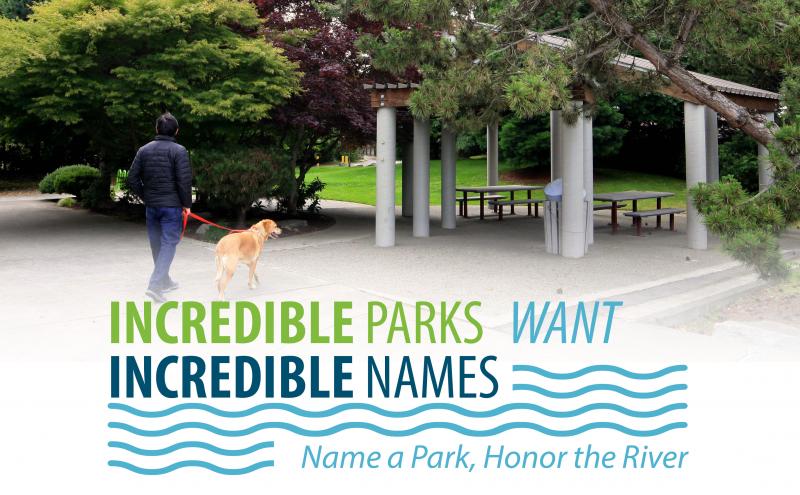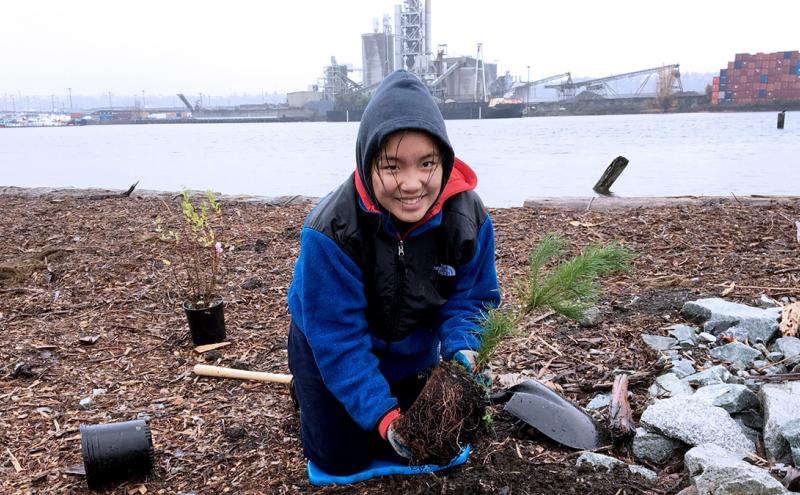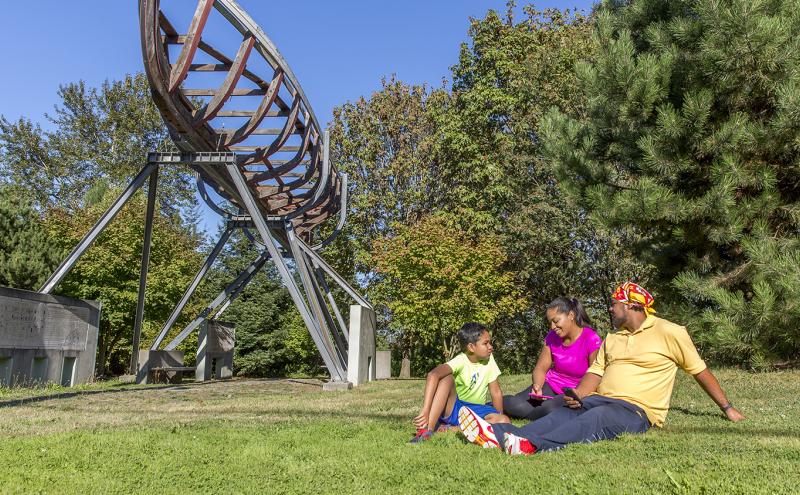
From 1915 to 1931 a wooden swing bridge crossed the Duwamish River, creating an important connection between the South Park and Georgetown communities along 8th Avenue as well as a continuous link to the rest of Seattle. The bridge helped transport South Park farm produce to markets and provided regular “street car” service in and out of the neighborhood. Today, the site of the historic bridge is a popular lunch spot with local workers and residents who pause to observe wildlife and watch barges and tugboats float by.
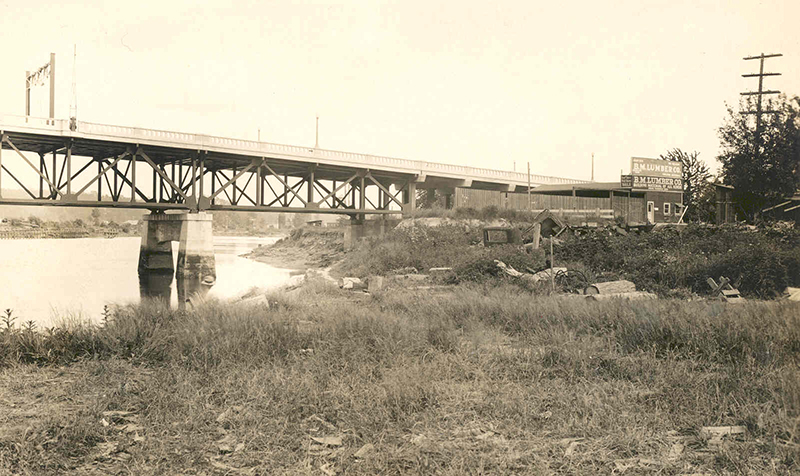
Eighth Avenue South Park is among a group of parks and public access points along the Duwamish River that have been restored after weathering decades of industrial development. These parks have rich cultural and environmental significance for communities who have stewarded the land over the years. Now these communities will have the chance to rename six of these parks.
WANTED: Six incredible names
To recognize the community’s stewardship in restoring the Duwamish River habitat, the Port is partnering with public park and greenspace non-profit, Seattle Parks Foundation to design and implement the re-naming campaign, ‘Incredible Parks Want Incredible Names’, with transparency and community involvement.
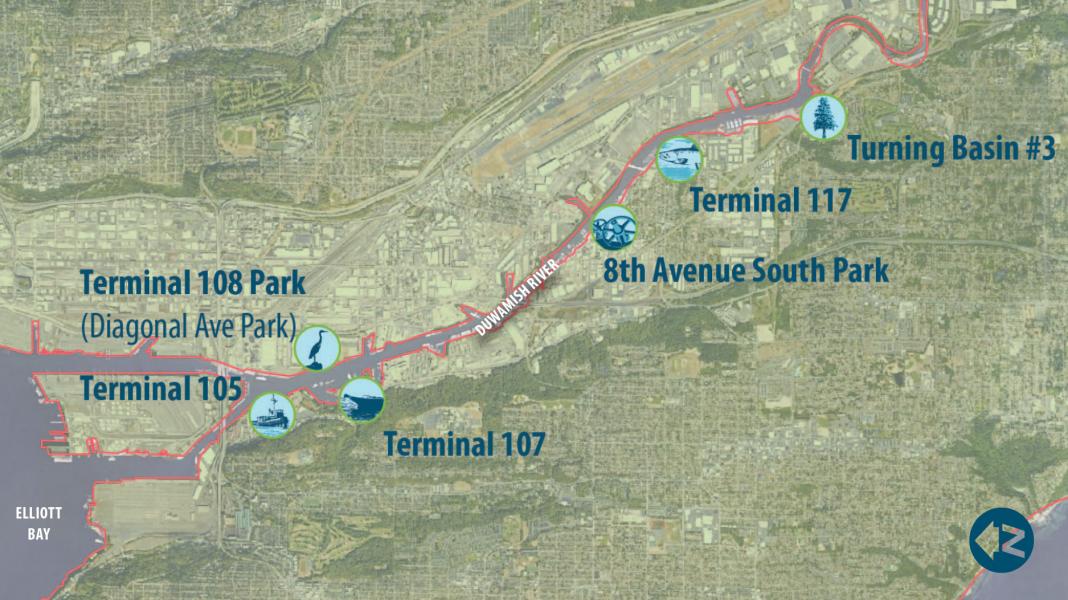
The six parks are currently named after geographic markers or previous industrial purposes: Turning Basin #3, 8th Ave South Park, Terminal 117, Terminal 107 Park, Terminal 108 (Diagonal Street Public Access), and Terminal 105 Park. These names don’t reflect the community stewardship or environmental or cultural significance of the area. By involving the community in renaming these parks, the Port hopes to re-connect these sites to the adjacent communities that have played such an important role in their restoration.
Thatcher Bailey, President and CEO of the Seattle Parks Foundation said, “Re-naming is re-claiming, and this project is intended to build on the community’s connection to these parks, as well as their commitment to their stewardship of the rich, riparian habitat and the fish and wildlife that depend on it.”
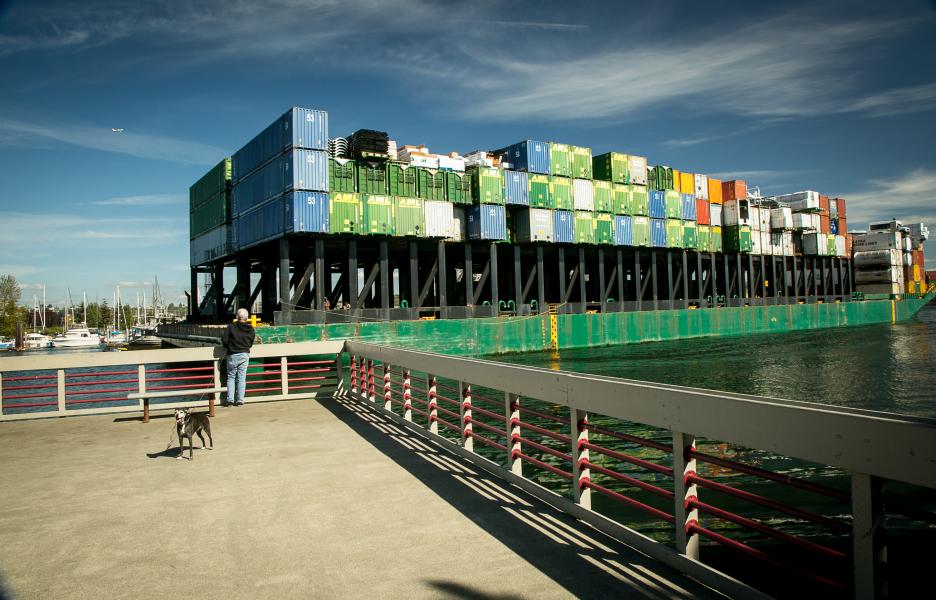
Share your name Ideas!
Can you think of incredible names for these parks?
Submit your ideas for names at the website before August 31 at midnight.
You can submit park name nominations in three ways:
-
Complete an online form at NameIncredibleParks.org
-
Leave an audio recording with your nomination at the Name Incredible Parks hotline (206) 385-9064
-
Fill out a nomination postcard and text a photo of it to the hotline
A review committee made up of diverse community and environmental leaders, tribal representatives, historians, and Port staff will review all park name nominations. The top three name nominations will be announced and set up for a public scoring period, which will then contribute to a final review and selection by the committee. New park names will be announced in a public ceremony in the fall.
Six community gems
Learn more about the complex histories of the six parks and what makes them a treasured part of our region’s history and an important part of our future at NameIncredibleParks.org.
Take a peek at what makes these two community treasures unique:
Terminal 117
After years of Port and community collaboration at the site, work is underway to create 14 acres of habitat and shoreline access to restore priority habitat for species such as Chinook salmon. This work contributes to salmon recovery in the region, which can also support the endangered Southern Resident orca population. The ongoing habitat restoration work at Terminal 117 also establishes the Port’s first “habitat credit bank” that enables third parties to invest in habitat projects as mitigation credits to comply with the Clean Water Act and the Endangered Species Act. Revenue generated by the Port will fund additional habitat restoration projects in the Green-Duwamish Watershed and Elliott Bay.
Turning Basin #3
This area, including Hamm Creek, is the epicenter of the first efforts to recognize and restore the health of the Duwamish River. John Beal, a Vietnam Veteran and local South Park resident, championed the clean-up and restoration at nearby Hamm Creek. Through this work he found his own health also being restored and lived many years educating and advocating for the health of the river. The Veteran's Conservation Corps was formed from this experience, helping combat veterans overcome the impacts of war. Much of John's work provided the seeds that have grown into today's efforts in revitalizing the river.
A deep connection
The Duwamish River provides a critical environment for salmon and wildlife and serves as an important link to our region’s rich cultural history. But decades of industrial economic development have threatened wildlife and adjacent communities that call the Duwamish River Valley home. These communities have partnered with the Port of Seattle to restore these pockets of land to vibrant habitat sites that can be enjoyed by all.
Thanks to these efforts, these six Port-owned parks and shoreline access sites along the Duwamish River now provide acres of green space where the community can gather and connect with their natural surroundings. These habitat restoration projects are part of the Port’s investment in our Century Agenda Goal to create, restore, or enhance 40 additional acres of habitat on the Green-Duwamish Watershed and Elliott Bay.
Learn more about the parks renaming campaign:

